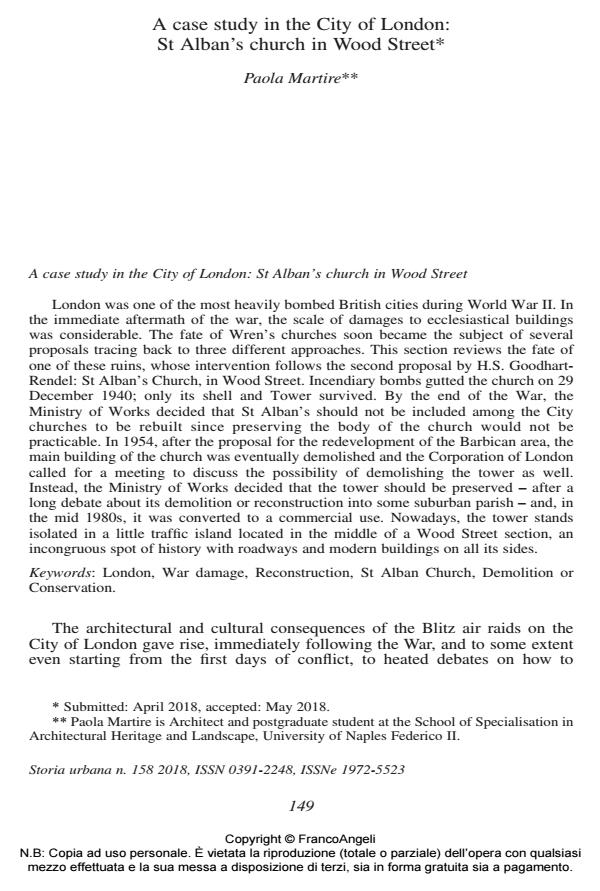A case study in the City of London: St Alban’s church in Wood Street
Titolo Rivista STORIA URBANA
Autori/Curatori Paola Martire
Anno di pubblicazione 2018 Fascicolo 2018/158
Lingua Inglese Numero pagine 15 P. 149-163 Dimensione file 21 KB
DOI 10.3280/SU2018-158007
Il DOI è il codice a barre della proprietà intellettuale: per saperne di più
clicca qui
Qui sotto puoi vedere in anteprima la prima pagina di questo articolo.
Se questo articolo ti interessa, lo puoi acquistare (e scaricare in formato pdf) seguendo le facili indicazioni per acquistare il download credit. Acquista Download Credits per scaricare questo Articolo in formato PDF

FrancoAngeli è membro della Publishers International Linking Association, Inc (PILA)associazione indipendente e non profit per facilitare (attraverso i servizi tecnologici implementati da CrossRef.org) l’accesso degli studiosi ai contenuti digitali nelle pubblicazioni professionali e scientifiche
London was one of the most heavily bombed British cities during World War II. In the immediate aftermath of the war, the scale of damages to ecclesiastical buildings was considerable. The fate of Wren’s churches soon became the subject of several proposals tracing back to three different approaches. This section reviews the fate of one of these ruins, whose intervention follows the second proposal by H.S. Goodhart- Rendel: St Alban’s Church, in Wood Street. Incendiary bombs gutted the church on 29 December 1940; only its shell and Tower survived. By the end of the War, the Ministry of Works decided that St Alban’s should not be included among the City churches to be rebuilt since preserving the body of the church would not be practicable. In 1954, after the proposal for the redevelopment of the Barbican area, the main building of the church was eventually demolished and the Corporation of London called for a meeting to discuss the possibility of demolishing the tower as well. Instead, the Ministry of Works decided that the tower should be preserved - after a long debate about its demolition or reconstruction into some suburban parish - and, in the mid 1980s, it was converted to a commercial use. Nowadays, the tower stands isolated in a little traffic island located in the middle of a Wood Street section, an incongruous spot of history with roadways and modern buildings on all its sides.
Keywords:London, War damage, Reconstruction, St Alban Church, Demolition or Conservation.
Paola Martire, A case study in the City of London: St Alban’s church in Wood Street in "STORIA URBANA " 158/2018, pp 149-163, DOI: 10.3280/SU2018-158007